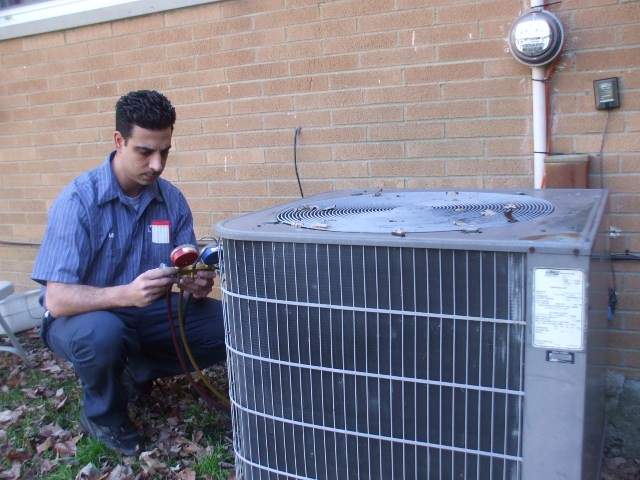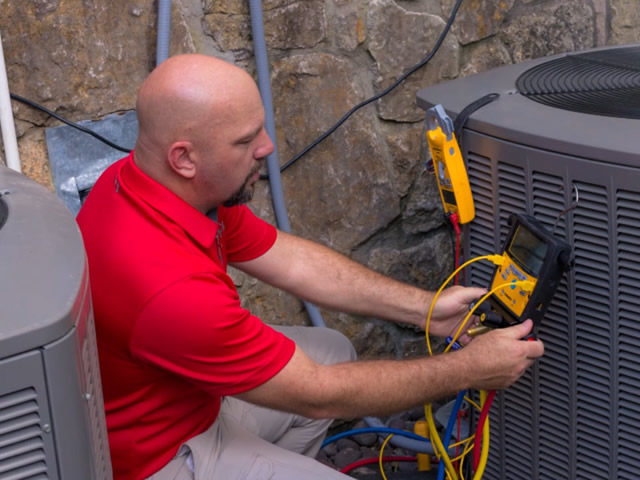Air conditioning systems are vital for maintaining comfort during the hotter months, ensuring that we stay cool and comfortable in our homes and workplaces. However, when you notice reduced airflow from your air conditioner, it can be frustrating. A drop in airflow not only hampers the cooling efficiency but also puts additional strain on the system, leading to potential long-term damage. In this blog post, we’ll explore the common causes of low airflow in air conditioners and provide practical solutions to address them.
1. Dirty Air Filters
One of the most common causes of reduced airflow in an air conditioner is dirty or clogged air filters. Air filters trap dust, dirt, and other debris to prevent them from entering the air ducts and the cooling system. Over time, these filters can become clogged with dirt, limiting the amount of air that can pass through. This results in weak airflow, and in some cases, the system may even freeze due to restricted air.
Solution:
Check the air filters regularly, especially during peak cooling seasons. Depending on usage, it’s recommended to replace or clean the filters every 1 to 3 months. If you have pets or live in a dusty area, you may need to clean them more frequently. Replacing a clogged filter is an easy and cost-effective way to restore airflow and improve the air conditioner’s efficiency.
2. Obstructed Vents and Registers
Another reason for low airflow could be blocked or obstructed vents and registers. If furniture, curtains, or other objects are placed in front of the air vents, they can block the airflow from reaching the desired area. This is often an overlooked cause of airflow problems, as homeowners tend to focus more on the air conditioner unit itself.
Solution:
Inspect all the vents and registers in your home to ensure they are unobstructed. Move any furniture, rugs, or other objects that may be blocking airflow. In addition, make sure the vents are fully open and unblocked. Regularly cleaning the vent covers can also help improve the airflow.
3. Leaky Ductwork
Over time, the ductwork in your home can develop leaks or become disconnected. Leaky ducts can significantly reduce airflow, as cooled air escapes before it reaches the rooms. According to the U.S. Department of Energy, leaky ducts can lead to a loss of up to 30% of conditioned air. Not only does this reduce the cooling efficiency of your air conditioner, but it also increases your energy bills.
Solution:
If you suspect that your ductwork has leaks, it’s important to call in a professional to inspect and seal them. Duct sealing involves using special materials like mastic sealant or foil-backed tape to close up any leaks. Having ducts inspected regularly and repaired when necessary will help maintain optimal airflow and energy efficiency.
4. Frozen Evaporator Coils
When the evaporator coils inside your air conditioning unit freeze, they can’t absorb heat from the air, which reduces the overall efficiency of the system. A frozen coil can also block airflow, as ice buildup restricts the passage of air over the coil. The most common cause of frozen coils is poor airflow, often due to a dirty air filter or low refrigerant levels.
Solution:
If you notice that your air conditioner is blowing warm air or the airflow has decreased significantly, check for frozen coils. To address the issue, turn off the unit and let the ice thaw. Once it’s thawed, check the filter, and replace it if necessary. If the problem persists, you may have low refrigerant levels, which would require professional service to refill the refrigerant and restore airflow.
5. Faulty Blower Fan
The blower fan is responsible for circulating air through the system and pushing it out of the vents. If the fan is malfunctioning, it can lead to a decrease in airflow. A faulty blower fan may be caused by worn-out components, electrical issues, or a malfunctioning fan motor.
Solution:
If the blower fan is not operating properly, it may need to be repaired or replaced. It’s best to call a professional HVAC technician to diagnose and fix the issue. In some cases, cleaning or lubricating the fan may be sufficient to restore its functionality and improve airflow.
6. Improper Thermostat Settings
Sometimes, the issue isn’t with the air conditioner itself but with the thermostat settings. If the thermostat is set too high or malfunctioning, it can cause the air conditioner to run inefficiently, resulting in weak airflow. Additionally, a thermostat that is not properly calibrated can misread the room temperature and prevent the air conditioner from cooling effectively.
Solution:
Check your thermostat settings to ensure they are correctly adjusted. If you notice that the thermostat isn’t responding properly or if the temperature readings seem inaccurate, it may need to be recalibrated or replaced. A programmable thermostat can help optimize cooling and ensure that the system runs efficiently.

7. Low Refrigerant Levels
Refrigerant is a crucial component in the air conditioning system, as it absorbs and releases heat to cool the air. If the refrigerant level is low, the air conditioner will not be able to cool the air effectively, which can lead to reduced airflow. Low refrigerant levels are often caused by leaks in the system. In such cases, professional Serangoon aircon servicing is essential to identify and fix leaks, ensuring the air conditioning system operates efficiently and maintains optimal cooling performance.
Solution:
Low refrigerant levels require a professional HVAC technician to inspect and refill the refrigerant. They will also check for any leaks and seal them to prevent future refrigerant loss. It’s important to address this issue promptly, as low refrigerant levels can lead to long-term damage to the compressor.
8. Improperly Sized Air Conditioner
If your air conditioner is too small for the space it is cooling, it will struggle to provide adequate airflow. An undersized air conditioner will have to work harder to cool the space, which can lead to a drop in airflow and excessive wear on the system. On the other hand, an oversized unit may cycle on and off too frequently, preventing proper air distribution.
Solution:
When installing an air conditioning unit, make sure it is properly sized for the space. An HVAC technician can perform a load calculation to determine the correct size unit for your home. If you have an improperly sized air conditioner, you may need to replace it with one that is more suited to your cooling needs.
Conclusion
Low airflow in an air conditioner can be caused by a variety of factors, from dirty air filters to more complex issues like refrigerant leaks or faulty blower fans. Regular maintenance, such as cleaning filters and checking ducts, can go a long way in preventing airflow problems. However, if the issue persists or seems more complex, it’s always best to consult a professional HVAC technician to properly diagnose and fix the problem. By addressing airflow issues promptly, you can ensure your air conditioner operates efficiently, providing consistent cooling and improving the overall comfort of your living space.




